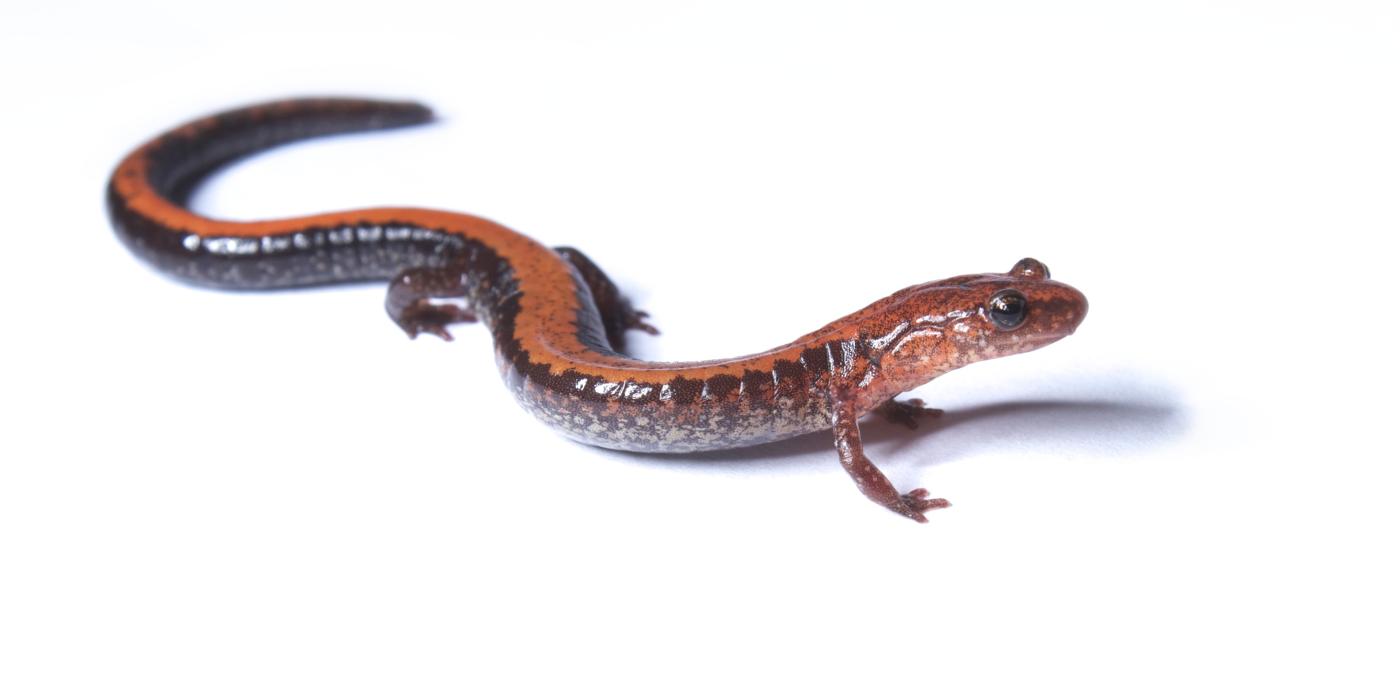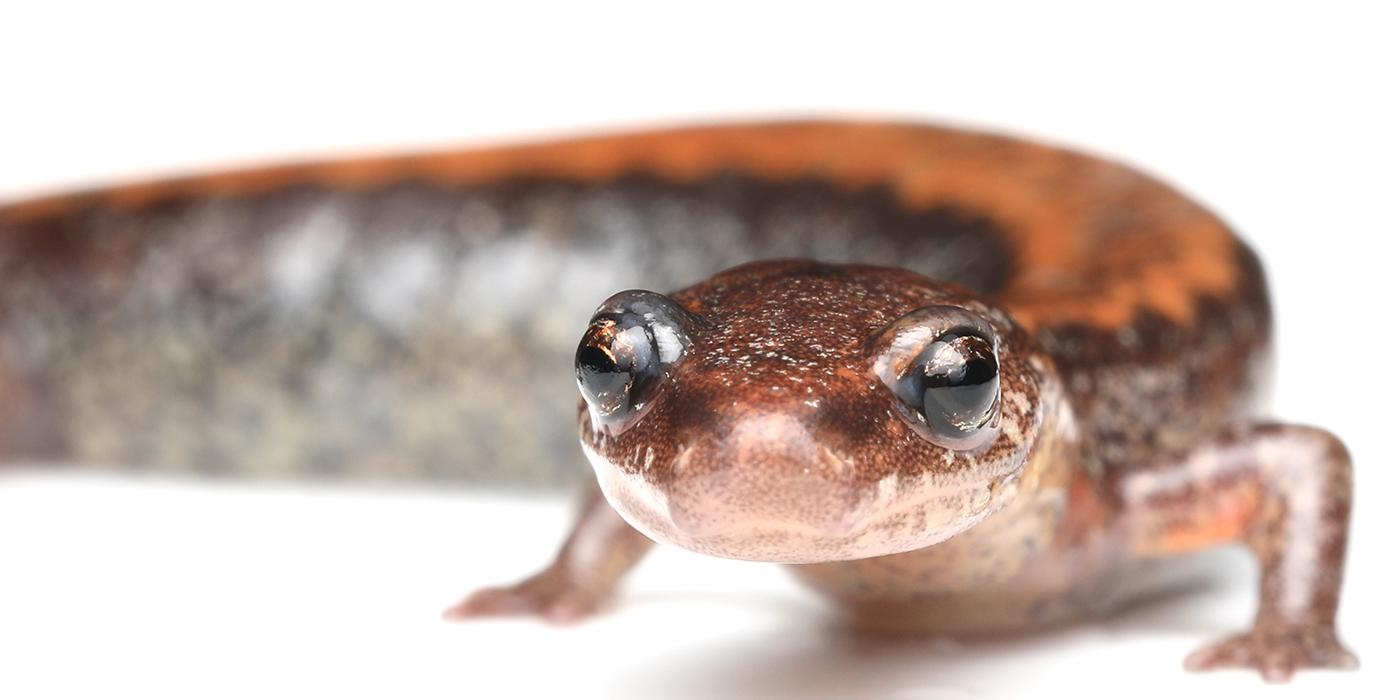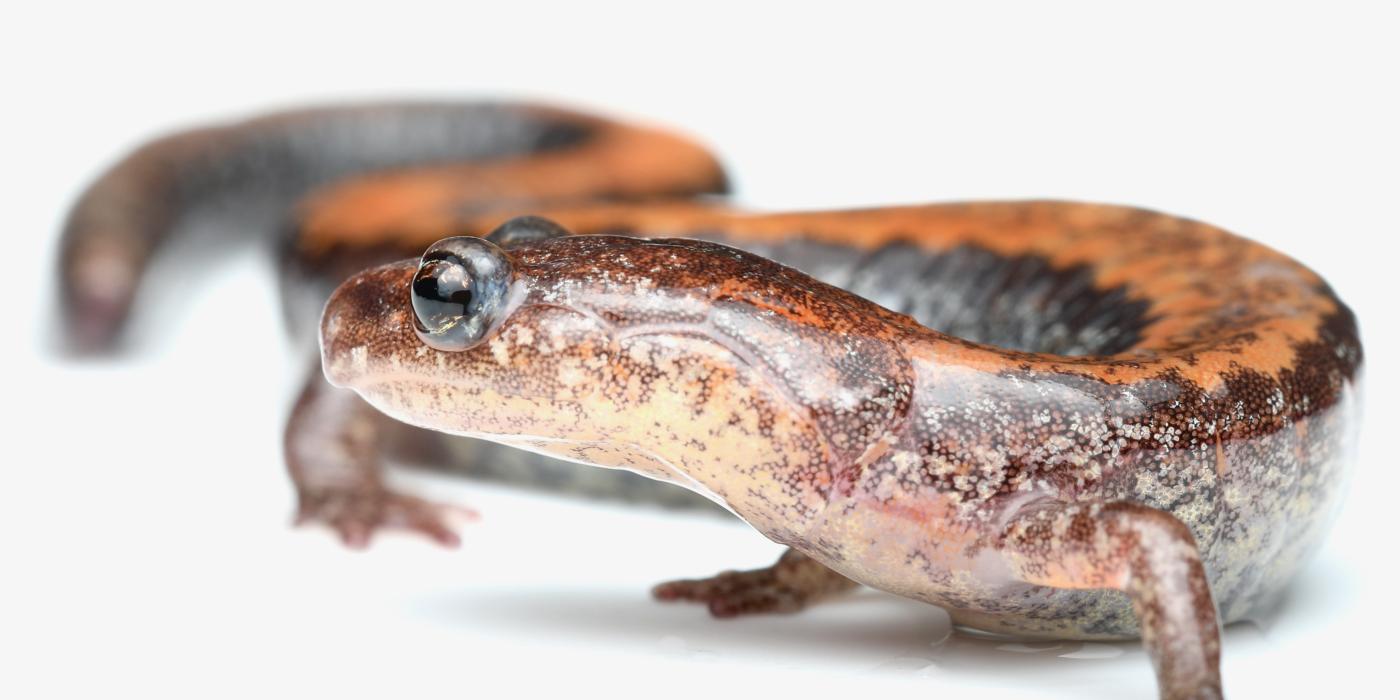Revisiting the Effects of Climate Change on Salamander Body Size: The Role of Natural History Collections
This update was written by Smithsonian Conservation Biology Institute scientist Brian Gratwicke and first appeared on Geo.
Our recent paper, "The relationship between climate and adult body size in redback salamanders (Plethodon cinereus)," found that salamanders were larger in warmer parts of their range. We also found that that body size increased significantly in places where the climate had become hotter and drier.
Small-bodied lungless salamanders breathe through their skin and tend to come to forage on the surface in cool, damp conditions associated with spring and fall, which is the best time to find them. They have thrived in the cool, temperate climate of the Appalachian Mountains, making this region a global hotspot for salamander diversity. Because of their preference for cool, damp environments, salamander biologists worry that predictions of warmer climates and more intense rainfall events with longer dry spells in between may be bad news for these distinctive creatures.
Several studies using museum specimens found that salamanders in warmer areas have larger bodies, but one recent study suggested that salamanders were actually shrinking in response to climate change. Subsequent papers have dwelled on the challenges of using museum specimens to draw these types of conclusions, but none re-examined the actual phenomenon of the shrinking salamanders. We designed a new study to revisit the question using museum specimens in a way that accounts for some of the previous limitations.
We selected redback salamanders, which are one of the most abundant vertebrates both by number and biomass in forests in the eastern United States. One classic study by Thomas Burton and Gene Likens at Hubbard Brook Forest in New Hampshire found densities of about 3,000 salamanders per hectare, mostly redbacks. This wide-ranging, abundant species is also very well represented in museum collections. About 70,000 redback specimens are held in the Smithsonian’s Museum of Natural History, mostly collected between 1950 and 2000.
A collection of this size allowed us to pre-emptively select our comparison groups in a way that would eliminate sampling bias, maintain large sample sizes and maximize our power to answer the question. We corrected our samples for potential sources of sampling bias, including seasonal collection bias and potential destructive sampling bias. We found that redback salamander body size actually increased 1.8 percent in the places that had warmed significantly. Our observations do not really shed any light on whether climate change is a potential threat to redback salamanders, but there does appear to be a measurable effect on the species.
The nature and culture surrounding natural history collections is changing, and very few redback salamander specimens were logged after the year 2000, restricting the time period we could analyze. This likely is a product both of the ethics debate surrounding indiscriminate collecting and the growing popularity of new citizen-science tools like iNaturalist, which create photographic specimens in publicly accessible databases with critical collection information. We were able to use citizen-science databases like the Maryland Herp Atlas and iNaturalist to verify that the salamanders are still common in all the counties that have warmed significantly, but body size data were not available. We actively support and participate in these non-destructive efforts, but view them as complimentary to well-curated natural history specimens, rather than a substitute.
Related Species:




